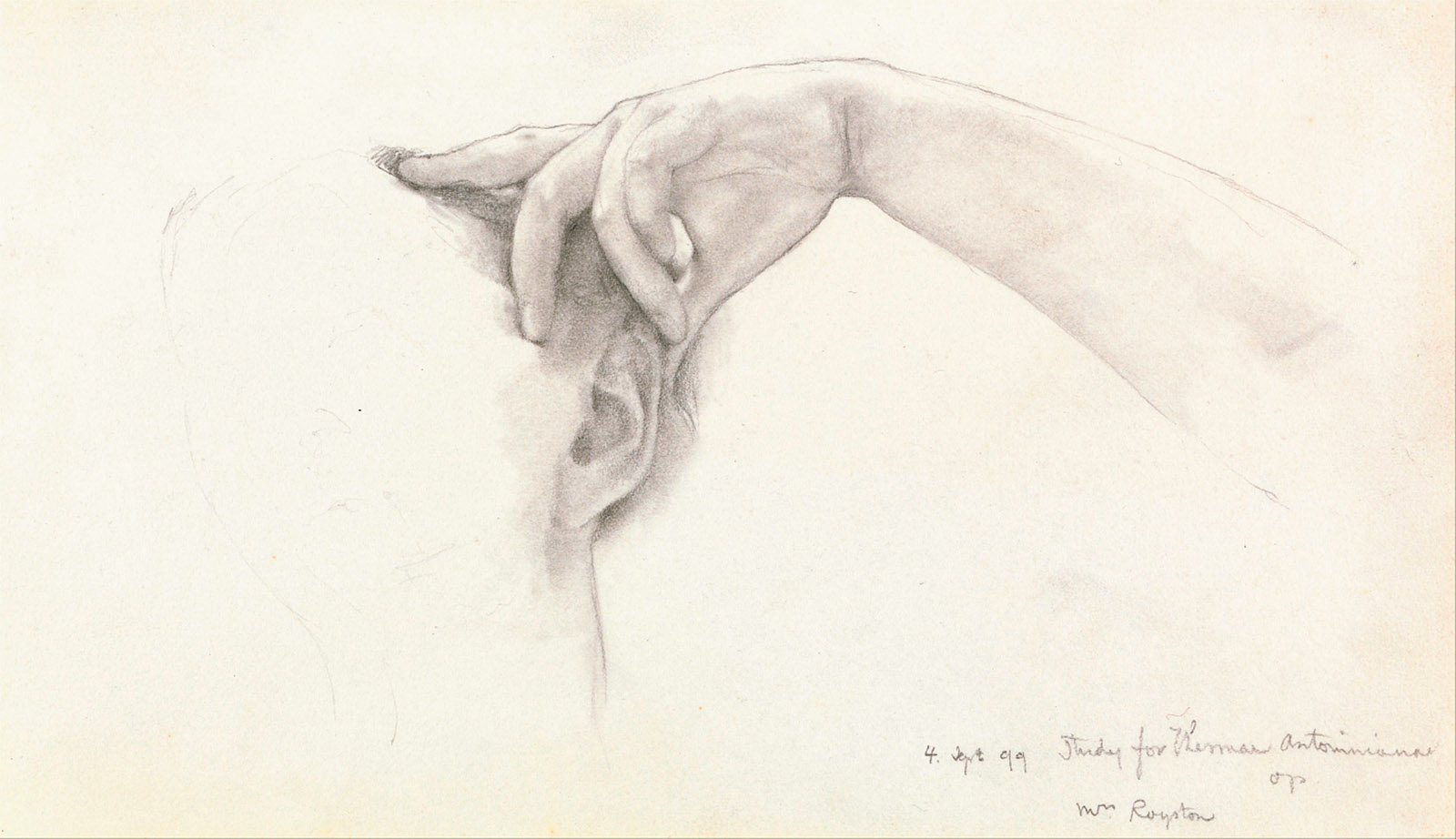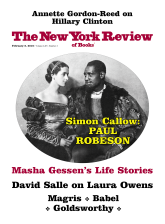To the Editors:
We are auditory professionals who enjoyed the recent article by Jerome Groopman, reviewing The Language of Light: A History of Silent Voices, by Gerald Shea [“The Sounds of Silence,” NYR, December 7]. The history of sign language, the obstacles placed by organized religion, the eventual acceptance of, and the current trend away from, signing make a fascinating and illuminating story. We recognize the beauty and utility of sign language and the strong desire by those who use it to keep this language alive.
However, the article ends with a discussion of cochlear implants that paints a picture of the implantee experience that is far less positive than it is in reality. The point we wish to make is the tremendous impact of being able to communicate with all others that cochlear implants bestow on deaf children and later-deafened adults. Cochlear implantation took off during the 1990s, and so today we have decades of research on language acquisition by implantees. Scores of scholarly publications, including in the most reputable medical and scientific journals, have consistently shown that cochlear implants improve hearing and speech comprehension in children born deaf,1, 2 with social and emotional effects that extend beyond laboratory settings.3
For those wishing for a more entertaining learning experience, watch YouTube cochlear implant videos of everything from children hearing their family’s voices for the first time, to a young woman navigating university.4 In the latter, one finds a full story of the trials and triumphs of a cochlear implantee. Cochlear implants are not a perfect solution, they do not restore fully normal hearing, but there is no doubt that the cochlear implant is an amazing success story. It is not a finished story and hundreds of researchers continue to work to improve hearing, thanks to private industry, the National Institutes of Health, and other funding bodies. Cochlear implants are a tremendous benefit to society and their wearers, and to paint them as anything less is simply inaccurate.
Elizabeth S. Olson, Ph.D.
Justin S. Golub, MD, MS
Department of Otolaryngology
Head and Neck Surgery
NewYork-Presbyterian/Columbia University Medical Center
New York City
Jerome Groopman replies:
I have no bias for or against cochlear implants. Contrary to the statement by Professor Olson and Dr. Golub, my portrayal of their effects is accurate. In fact, the first two studies cited in their letter fully support the points made in my review.
Olson and Golub assert that “cochlear implants are a tremendous benefit to society and their wearers.” A more accurate assessment would add the phrase “when they work well.” The greatest benefit, as I wrote, is generally for those who once could hear and then lost the ability to do so. The university student in the YouTube video Olson and Golub cite had normal hearing until the age of nineteen months, and then developed meningitis and became deaf. But there is considerable variability in how well children with cochlear implants can acquire speech and language comprehension, as the first study they refer to shows. The 188 children in this study are a selected group, not representative of all those who receive implants; they had to have high baseline cognitive and motor skills before implantation and thus were most likely to have a positive outcome.
From this favorable starting point, many children, especially those who once had hearing and lost it, had excellent results three years later, but many others did not, falling far below their hearing peers in speech and comprehension. Furthermore, assessment of the children’s speech and comprehension occurred in a laboratory setting with standardized tests, in keeping with the observation in my review that most clinical data on cochlear implants come from such controlled environments rather than the larger world. To their credit, the authors of the study highlight a major limitation of their work: there is no comparative control group of hearing-impaired children without cochlear implants. They emphasize that the absence of such matched controls “preclude[s] causal conclusions” about the net benefits of the implants.
Olson and Golub’s second reference, the study by Svirsky et al., includes data on seventy children collected over thirty months. These researchers found that while on average the implant slowed language delay,
These average results conceal a large amount of individual variability…. Some children’s language abilities remain severely delayed even after more than two years of experience with their cochlear implant…. However, some children displayed expressive language abilities that were very close to the average values shown by their normal-hearing peers.
A graph (figure 4) in the article clearly displays the wide range of these outcomes. While some children with the implant at 2–2.5 years approached estimated mean normal language proficiency, many fell 95 percent or more below the mean.
Olson and Golub call the device “amazing,” and for some children and families it certainly is. But for others, as Shea observes in The Language of Light and the results in these two studies show, cochlear implants fall far short of expectations.
As I wrote, cochlear implants have “mainstreamed” most hearing-impaired children. “Since less than 0.25 percent of the American population can communicate with sign language,” I noted, “Shea acknowledges the understandable desire of parents to give their deaf children sufficient hearing to function in the larger world.” But he also argues that signing is a natural language of the deaf, and in much of the book recounts the impressive educational achievements of deaf children educated with signing. In both studies cited by Olson and Golub, there is no comparison between the academic achievement of children with implants and that of those who sign.
The third reference offered by Olson and Golub is a cost-utility analysis of cochlear implants based on what is termed “quality-adjusted life-years” (QALYs). These are essentially thought experiments in which healthy people are asked to say what odds they would take to avoid deafness at the risk of immediate death (the standard gamble), or parents of deaf children are asked how many years of life would be worth giving up to avoid hearing loss (time trade-off). The health economist Paul Dolan and Nobel laureate Daniel Kahneman have found deep methodological flaws in these thought experiments, persuasively arguing that healthy individuals cannot make meaningful calculations about medical conditions they themselves have never experienced.5 Many with disabilities find the idea of healthy people imagining they would give up life to prevent their condition highly offensive.
The YouTube testimonials feature “amazing” outcomes like that of the young Oxford student. But such inspiring anecdotes ought to be seen within a larger clinical setting. Children with scant benefit from the implant, like those in the study by Svirsky et al., should be featured as well. A recent review-article details the delayed complications experienced by those who received cochlear implants.6 Some 1,300 of 22,842 adult and pediatric recipients of cochlear implants suffered significant negative outcomes, most prominently “vestibular complications” such as impaired balance and dizziness. One might argue that there should be YouTube testimonials from such individuals, who have difficulty walking or feel themselves spinning, alongside those with outstanding outcomes, to give viewers a more accurate and complete picture of implants’ benefits and risks.
Surgeons and scientists like Golub and Olson believe deeply in the positive net value of cochlear implants. Shea shows how many deaf people believe as deeply in signing, their “language of light,” as a hallmark of their identity and a successful means for educational advancement. Families must weigh the full breadth of clinical data, both positive and negative, as well as the cultural effects of the device to arrive at the choice that most enhances their children’s lives.
This Issue
February 8, 2018
To Be, or Not to Be
Female Trouble
The Emperor Robeson
-
1
See J.K. Niparko et al., “Spoken Language Development in Children Following Cochlear Implantation,” JAMA, April 21, 2010. ↩
-
2
See M.A. Svirsky et al., “Language Development in Profoundly Deaf Children with Cochlear Implants,” Psychological Science, March 1, 2000. ↩
-
3
See A.K. Cheng et al., “Cost-Utility Analysis of the Cochlear Implant in Children,” JAMA, August 16, 2000. ↩
-
4
See for example “Hearing… but not
as you know it,” “Years later, child’s
cochlear implants are his ‘ears’,” and “What it’s like to
hear with cochlear implants”. ↩ -
5
Paul Dolan and Daniel Kahneman, “Interpretations of Utility and Their Implications for the Valuation of Health,” The Economic Journal, January 2008. ↩
-
6
Bradford Terry, Rachel E. Kelt, and Anita Jeyakumar, “Delayed Complications After Cochlear Implantation,” JAMA Otolaryngology—Head & Neck Surgery, November 2015. ↩




